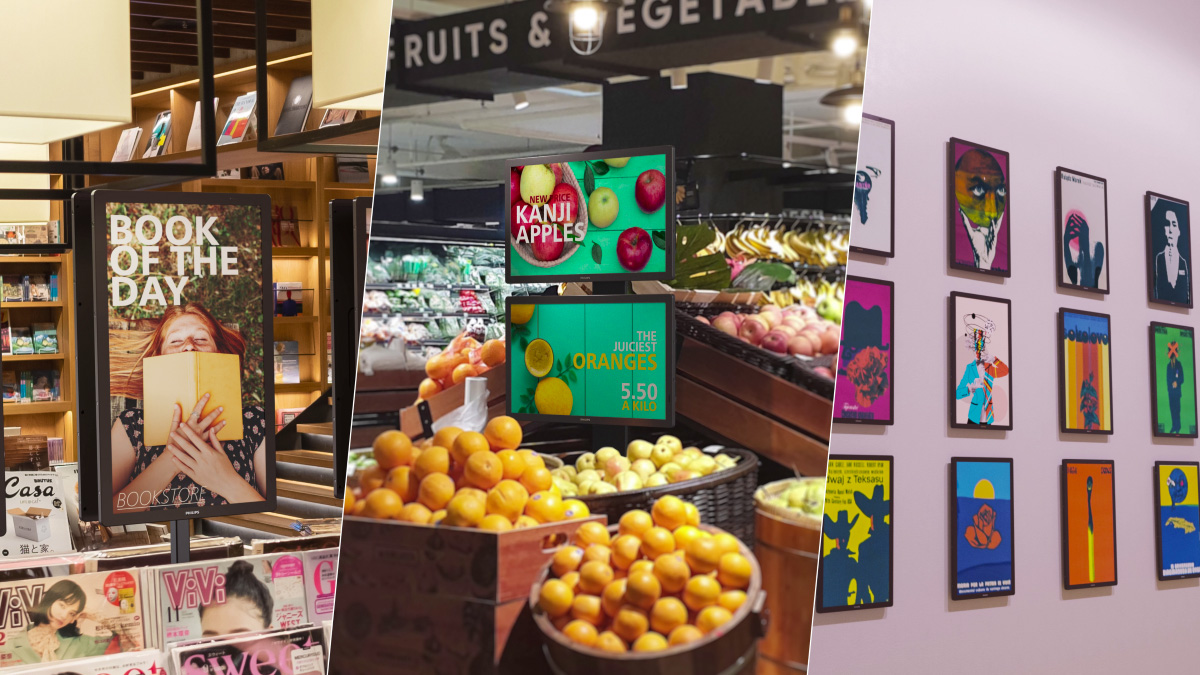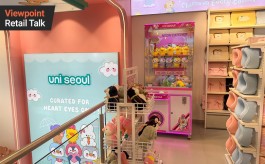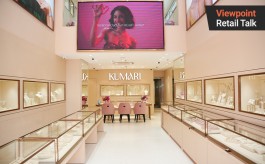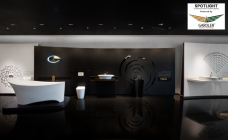‘Retailers can now meet their aims at a fraction of the running cost’
By N Jayalakshmi | May 11, 2023
In this exclusive interaction with Retail4Growth, Martijn van der Woude, Vice President - Global Marketing & Business Development Philips Professional Displays (PPDS), talks about how the new ‘zero power’ Philips Tableaux advanced colour ePaper (ACeP) signage launched by PPDS recently, can help retailers with cost and energy savings.
Let’s first talk about the new ‘zero power’ Philips Tableaux advanced colour ePaper (ACeP) signage displays that you launched recently, especially targeted at retail. What are the key features that make it different from your other similar products?
As you know, ePaper, sometimes called electronic ink, e-Ink, or electrophoretic displays, is not a new technology. But, of course, the technology has advanced significantly in recent years and even months.
The advance of ePaper also fits with one of our key mission statements – to incorporate sustainability in everything we do, and to bring more eco-friendly solutions to our customers and partners. With the Philips Tableaux, we have broken new ground by becoming the first leading global display provider to introduce a full size, full colour, ePaper solution.
The Philips Tableaux was launched in a 16:9 25” format with more sizes to come in the near future. What makes this product so exciting, and far advanced from the ePaper used for readers and the like, is its capability to deliver 24/7 full colour static content, while running entirely unplugged and without using a single kilowatt of electricity. And it only needs minimal power for updating the image – less than the cost of boiling a kettle twenty times. Hard to believe, but true. This brings instant cost and energy savings, while creating incredible new opportunities for retailers to introduce or extend their promotions and communications. Light enough to be moved around easily when required, the displays only require connection to an electricity source when content is being updated, reverting to zero power upon completion.
Content updates can be managed manually, or entirely remotely using PPDS’ in-house or third-party professional display control and management platforms, including PPDS Wave.

What specific challenges or pain points of retailers do the new display solutions help address?
With Philips Tableaux, we identified a gap in the market and developed a solution quickly. So, while we pride ourselves on introducing state-of-the-art, best-in-class visual technologies, we understand that the capabilities of our displays may often exceed the needs of certain customers. Take, for example, a retail store looking to replace their in-store paper communications - posters, menus, offers, opening times over Christmas, and so on. Typically, they would have two options. Invest in a digital display solution and only use a fraction of its capabilities, or simply save their money and stick to what they have, stalling progress and their ambitions.
I have seen many instances, particularly in retail, where a state-of-the-art Philips digital signage display has been installed on the shop floor but is only used to show still images. And in many instances, the image doesn’t change for the entire duration of the customer’s visit to the store. Sometimes it is still there, unchanged, the next day or even week later. That is not a great investment.
In these instances, you do not need a solution that offers a high refresh rate, for example 60fps. With the Philips Tableaux series from PPDS, retailers can achieve their aims and ambitions at a fraction of the running cost, while bringing immediate savings for themselves and for the environment.
A paper-based poster becomes a digital poster, one that can be regularly updated, be it every few hours, or every few days or weeks. These can even be managed remotely. No wastage, no need for expensive printing, vehicle deliveries, manual changes taking sales staff away from supporting customers, or risks of out of date promotions being shown. The savings alone by eliminating these add up. Imagine a retailer with, say, 1,000 stores across Asia and beyond, and being able to control, monitor and update 100 per cent of their promo materials remotely from a single location.
Any common myths and misconceptions that you observe in the retail segment specifically when it comes to the use of ePaper signage displays?
There are many misconceptions about ePaper, most of which are based on what people have seen and experienced for themselves, so it is understandable. Perhaps the biggest myth, or misunderstanding, is that ePaper is a black and white solution.
For many, ePaper is often immediately associated with their experiences with an Amazon Kindle. And to an extent, they are correct. But as I have said, ePaper has evolved and grown (in both popularity and size) significantly in recent times and will continue to do so. The Philips Tableaux is at the forefront of those advancements. They are full size. And they are full colour, including blue, which has been a major obstacle in the past. They can also be fully connected, allowing them to be monitored, managed and controlled remotely. As for the quality, the images displayed on the Philips Tableaux are so clear, you would struggle to know if you are looking at a digital display, or a high-quality poster.
Any checklist or dos and don’ts that you would like to share for the benefit of retailers looking to invest in ePaper signage?
As with any buying decision, it is crucial to understand and identify your full needs and requirements. ePaper is a fantastic solution, providing many opportunities in retail. It is still, of course, important for buyers to do their research. Like all technologies, there are limitations. At PPDS, we are a provider of total solutions, of which ePaper is one. It can be a standalone or complimentary solution as part of a wider range of displays, from vast LED installations snaking around a store, interactive displays, or more traditional, high impact, UHD digital signage. If video is what you want, then ePaper is not for you. If you want to extend your digital communications or reduce the amount of wasteful paper-based signage and communications in your store, or if you are looking to replace existing display solutions that do not require video content, thereby reducing your energy costs, then Philips Tableaux is definitely one to evaluate. Almost every day, we hear from someone in the retail world with a new idea of how Philips Tableaux can be used, which is fantastic.
How do you expect the market for ePaper signage displays to grow in the next 5 years? What do you think will be the key segments, trends and factors driving the growth?
The outlook is very promising. APAC remains one of the world’s most adoptive markets for digital signage, with forecasts showing growth from $14.3 billion in 2022 to $20.1 billion in 2027*, presenting significant opportunities.
The global ePaper display market size, specifically, increased from $1.95 billion in 2021 to $2.68 billion in 2022, with the market expected to reach $9.08 billion in 2026 at a CAGR of 35.7%, according to forecasts.
North America was the largest region in the ePaper display market in 2021, with Asia Pacific expected to be the fastest growing region over the next three years or more.
Retail will play a major part in this growth, for the reasons I have already mentioned. The key is that ePaper creates a brand new category, and a new opportunity for retailers – one that did not exist before.
Any observations on the Indian retail segment as a market for ePaper signage? How do you think Indian retailers can leverage it as a business enabling solution?
The opportunities are extensive, and we expect the role of ePaper to see significant adoption in Asia.
India, like most countries, has been impacted by the continued growth and heightened focus from retailers into their e-commerce strategies. The impact of the pandemic only increased this further, adding even greater pressures on traditional high street retail. But the retail industry’s long term prospects remain increasingly promising. According to statistics from Statista, in 2020, the retail market in India was 883 billion U.S. dollars, down from 950 billion dollars recorded in 2018. By 2026, this value is expected to surpass 1.7 trillion, representing an increase of over 80 percent in comparison to 2018.
The increase, says one report, is supported by rising affluence, favourable demographics, increased urbanisation and, significantly, the rising entry of foreign competitors, with India now reportedly the fifth largest global destination for retail.
So, the opportunities are vast. For retailers that have already invested in a digital signage strategy, Philips Tableaux could be a complementary solution, or perhaps the final element needed for that retailer to eliminate paper-based signage from their store.









Comments